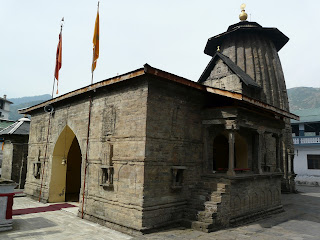The Laxmi Narayan Temple is considered as the one of the
oldest as well as the largest temple in Chamba, Himachal Pradesh. This temple
attracts many pilgrims throughout the year. The six different temples in the
Laxmi Narayan Temple complex are organized from north to south and are
consecrated to either Lord Vishnu or Lord Shiva. There are also several other
temples dwelt in the complex which collective make it highly captivating. These
other shrines include the temple of Shiva Temple of Chandergupta, Gauri Shankar
Temple and Radha Krishna.
Though this temple was built in the 10th century, the
Laxmi Narayan Temple seemed to be adorned by kings who engaged the throne of
Chamba subsequently. Raja Balabhadra Verma made the metallic icon of Garuda on
a high pillar at the main entrance gate of the temple while Raja Chhatra Singh
added the specious steeples on the temple tops. The latter was done as a
objection against the commands of Aurangzeb to demolish the temple. The legend
of the temple authorizes that Raja Sahil Verma, who built the temple, sent nine
of his sons to the Vindhyas peaks to get marble which was appropriate for the
construction of the Vishnu idol.
The marble that were brought contained a frog.
This was considered unfortunate and the sons were again sent back to get back
the marble blocks. However, all the sons died while on their way back. The king
did not gave up and he again sent his eldest son to get the marble. He was also
onslaught by the robbers, but with the aid of a saint succeeded to save himself
and kill his attackers. Yugkara, the eldest prince came back safely with the
needful slab which was used to make the idol of Lord Vishnu in the temple. The
temple is built in the Shikhara style. There is Bimana that is Shikhara,
garbhgriha and also a mandapa like construction. The wooden chattris and the
shield roofs indicate the climactic condition of the place where snowfall is
quiet anticipated. The Lakshmi Narayan Temple complex is opened between 6 am to
12.30 pm and then from 2.30 to 8.30 pm. In between this period, the divinities
are expected to be taking rest and at night they retire to the indoors of the
temple for rest.











0 comments:
Post a Comment
Note: Only a member of this blog may post a comment.